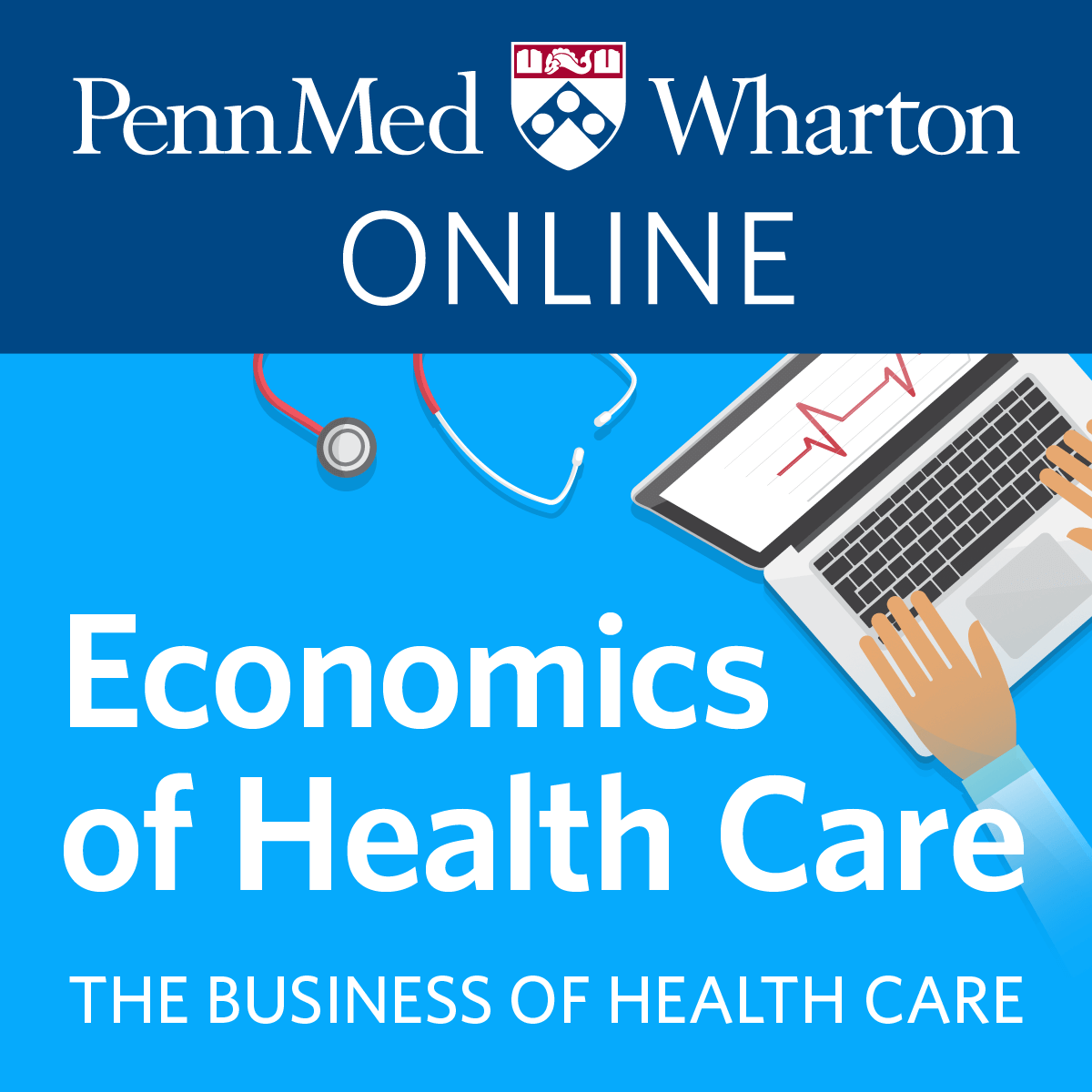Back to Courses









Business Essentials Courses - Page 30
Showing results 291-300 of 645

The Economics of Health Care Delivery
In this course, you’ll learn about the key components of health care, and the economics behind their principles and pricing strategies. Professors Ezekiel Emanuel of Penn Medicine and Guy David of the Wharton School have designed this course to help you understand the complex structure of the health care system and health insurance. Through study and analysis of providers and insurance through an economic lens, you’ll learn how basic economic principles apply to both principles and payment methods. By the end of this course, you’ll be able to identify different types of health care providers and understand the dynamic between the providers and patient so you can employ best practices and maximize profit for your health care organization.

Advanced Financial Reporting: Accounting for Business Combinations and Preparation of Consolidated Financial Statements
This course covers the accounting for business combinations (ASC 805), the preparation of consolidated financial statements (ASC 810), and other related topics including, but not limited to: step-by-step acquisition, deconsolidation, segments reporting, and the goodwill impairment test. This course begins with a discussion of the scope of ASC 805 and the differences between business combinations and asset acquisitions. Next, the course explores the measurement and recognition principles of the acquisition method to account for business combinations. Then, the course covers the consolidation process. You will learn how to prepare the consolidated financial statements and make all of the necessary consolidation adjustments.

Use Animations and Transitions in PowerPoint 365
PowerPoint 365 offers many advanced options that will really make your presentations shine and stand out above the rest. In this project, you will learn how to use animations and transitions in Microsoft PowerPoint.
First, you will learn how to prepare your presentation for adding animations, and then we will dive into all of the effects PowerPoint provides. You will learn how to apply and edit with Entrance Animations onto the screen. Then, you will apply Emphasis Animations to objects already on the screen and Exit Animations to make objects leave the screen. Finally, you will discover the secret behind transitions in between slides within your presentation.

Inspect ADA Compliance with Chrome Screen Reader Extensions
By the end of this project, you will be able to confidently leverage Chrome browser extensions to test information accessibility, so that you can ensure that as much of your audience as possible can intuitively take in and interact with your organization’s information.
To do this, you will gain hands-on experience working with the free screen reader extension in your Google Chrome browser.
Note: This course works best for learners who are based in the North America region. We’re currently working on providing the same experience in other regions.

Grab Data Fast with Vertical and Horizontal LOOKUP
Data can come our way in multiple forms and from multiple file types. It’s likely that at some point you will be faced with a data set that includes categories and subcategories under one heading or under headings with nested subheadings. Cutting through the file structure can seem like a time-consuming task, so it is critical to leverage VLOOKUP and HLOOKUP to pull out the needed data quickly. In this course you will understand how lookup tables work and apply VLOOKUP and HLOOKUP formulas to quickly extract data by treating a section of your spreadsheet as a lookup table. You will do this as we work side-by-side in the free-to-use software Google Sheets.
By the end of this course, you will understand use cases for using vertical and horizontal lookup to extract data when data sets have categories configured with multiple levels. You will also be able to confidently apply VLOOKUP and HLOOKUP formulas to grab data in any spreadsheet software.
Note: This course works best for learners who are based in the North America region. We’re currently working on providing the same experience in other regions.

Create Your Own Glossary in Microsoft Word
At the end of this project, you will learn different methods to create your own glossary in Microsoft Word. First, we will manually create a glossary in Microsoft Word and format it. Then, we will learn how to create a glossary inserting hyperlinks and formatting these using Microsoft Word. By learning two different ways of creating a glossary in Microsoft Word, you will be able to choose which type will meet your needs best when creating a glossary. Creating a glossary will allow you to provide explanations for terms to your readers and make your document easier to understand,
The goal of this project is to allow you to improve your reader’s experience by creating a glossary at the end of your document containing explanations for different terms and acronyms.

Life After COVID-19: Get Ready for our Post-Pandemic Future
The pandemic will create long-lasting and surprising ripple effects, even after vaccines are widely available. Are you ready for what's next?
This course will give you a clear forecast of the challenges and opportunities you’re most likely to encounter over the next 3-5 years, as a direct result of the ongoing COVID-19 pandemic.
- Find out what risks still lie ahead
- Make a plan for resilience
- Play future forecasting games to stretch your imagination about what's possible
- Build your post-pandemic confidence
- Envision the world you want to live in when we’re all finally on the other side of COVID-19. How can you take advantage of this unprecedented moment of disruption to make positive change in your community, company or other organization?
By completing this course, you’ll be better understand the “future shock” we’ve all just lived through together. You'll be able to identify the 7 pre-existing conditions of society that made the pandemic more severe and harder to recover from -- from economic inequality and racial injustice to fragile public trust and the climate emergency. Looking ahead, you'll explore the most surprising and exciting solutions that are being proposed to help our communities heal from these pre-existing conditions.
COVID-19 is a roller-coaster ride we will all be on for years to come. With the skills you build in this class, such as learning to spot the four patterns of change that occur during any period of crisis or major disruption, you will be better able to see the ups and downs coming before you get there. And you'll feel more in control of what happens next, as you learn to use the Institute for the Future's post-pandemic Toolkit for Transformation.
By the end of this course, you'll be more knowledgeable and better qualified to help yourself, or your company or other organization, navigate the rest of the pandemic and find success on our long road to recovery and reinvention.
This courses is taught by Institute for the Future Research Director Jane McGonigal, PhD.

Create a free online web presence using Blogger
In this 1-hour long project-based course, you will learn how to
- create a free web presence
- design your site
- publish your website
Note: This course works best for learners who are based in the North America region. We’re currently working on providing the same experience in other regions.

Introduction to Data Analytics for Business
This course will expose you to the data analytics practices executed in the business world. We will explore such key areas as the analytical process, how data is created, stored, accessed, and how the organization works with data and creates the environment in which analytics can flourish.
What you learn in this course will give you a strong foundation in all the areas that support analytics and will help you to better position yourself for success within your organization. You’ll develop skills and a perspective that will make you more productive faster and allow you to become a valuable asset to your organization.
This course also provides a basis for going deeper into advanced investigative and computational methods, which you have an opportunity to explore in future courses of the Data Analytics for Business specialization.
Federal Taxation II: Property Transactions of Business Owners and Shareholders
This course examines the U.S. federal tax system as it relates to property transactions of business owners and shareholders. Topics include cost recovery, such as depreciation, amortization, and depletion; calculation of realized versus recognized gains and losses; evaluation of the potential tax effects of nontaxable exchanges; and the combining, or netting, gains and losses that are different in nature. Assignments facilitate self-discovery of knowledge and development of a variety of professional skills.
Popular Internships and Jobs by Categories
Find Jobs & Internships
Browse
© 2024 BoostGrad | All rights reserved